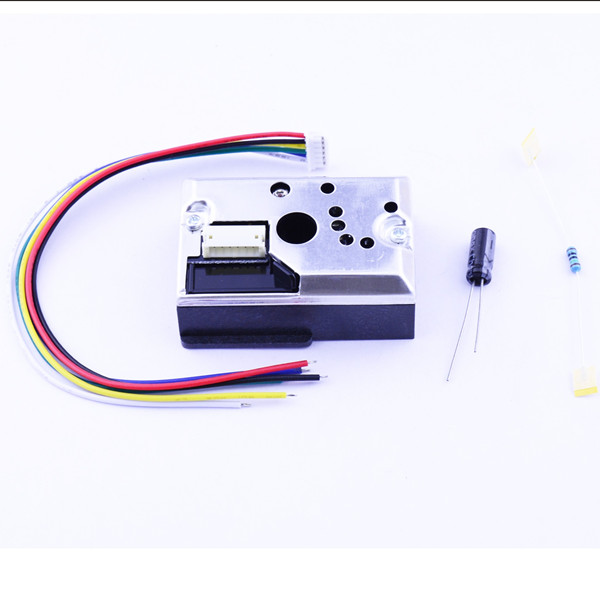
-
概述:
空气质量越来越成为广大国民关注的严重问题,作为一名创客,你是否想通过自己动手检测出自己身处的环境中的空气质量情况,并为它做点什么呢?
Sharp光学粉尘传感器(GP2Y1010AU0F)对于像香烟烟雾这样的颗粒十分敏感,因此常用于空气净化系统。 红外线发射二极管和光电晶体管对角式地排列在这款设备中,能够检测到空气粉尘中的反射光。这款传感器的电流消耗很低(最大电流20mA,通常11mA),并且能够在高达7伏的直流电下启动。传感器的模拟输出电压是同标准灰尘密度成比例的,其灵敏度为0.5V/0.1mg/m3。将它连接到Arduino上时,需要一个150欧的电阻器和220uF的电容器。
-
模块参数:
- 工作电压:5-7V
- 运行温度:-10~65℃
- 消耗电流:最大电流20mA
-
Arduino驱动示例:
| 传感器引脚 | Arduino引脚 |
| Vled | 5V(150欧电阻) |
| LED-GND | GND |
| LED | D2 |
| S-GND | GND |
| V0 | A0 |
| Vcc | 5V |
/*
Standalone Sketch to use with a Arduino UNO and a
Sharp Optical Dust Sensor GP2Y1010AU0F
*/
int measurePin = 0; //Connect dust sensor to Arduino A0 pin
int ledPower = 2; //Connect 3 led driver pins of dust sensor to Arduino D2
int samplingTime = 280;
int deltaTime = 40;
int sleepTime = 9680;
float voMeasured = 0;
float calcVoltage = 0;
float dustDensity = 0;
void setup(){
Serial.begin(9600);
pinMode(ledPower,OUTPUT);
}
void loop(){
digitalWrite(ledPower,LOW); // power on the LED
delayMicroseconds(samplingTime);
voMeasured = analogRead(measurePin); // read the dust value
delayMicroseconds(deltaTime);
digitalWrite(ledPower,HIGH); // turn the LED off
delayMicroseconds(sleepTime);
// 0 - 5V mapped to 0 - 1023 integer values
// recover voltage
calcVoltage = voMeasured * (5.0 / 1024.0);
// linear eqaution taken from http://www.howmuchsnow.com/arduino/airquality/
// Chris Nafis (c) 2012
dustDensity = 0.17 * calcVoltage - 0.1;
Serial.print("Raw Signal Value (0-1023): ");
Serial.print(voMeasured);
Serial.print(" - Voltage: ");
Serial.print(calcVoltage);
Serial.print(" - Dust Density: ");
Serial.println(dustDensity); // unit: mg/m3
delay(1000);
}
-
其他文档:

